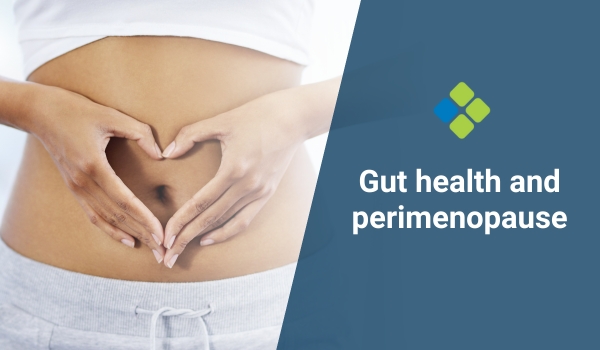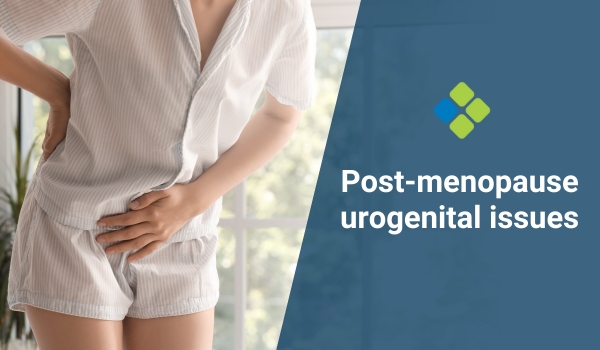Medical nutrition therapy for menopause
Dietary choices during menopause can enhance women’s wellbeing. Read about incorporating nutrition therapy as part of a menopause management plan.

HealthCert Education
Did you know that dietary choices during menopause can enhance women’s well-being? Primary care practitioners have a vital role when it comes to offering nutrition care direct to patients, or linking them to dietetic services as part of management plans (5).
Learn more about nutrition for menopause in the HealthCert Professional Diploma program in Medical Nutrition Management – online nutrition training for GPs.
Menopause generally tends to occur between the ages of 45 and 55. It is a natural stage that occurs when women stop menstruating for at least 12 consecutive months (1), during which many women experience physical and psychological symptoms that can affect their quality of life and ability to work. These include, but are not limited to (2):
- Hot flashes and night sweats
- Psychological symptoms (depression; anxiety; cognitive changes)
- Slowed metabolism and changes in body composition
Additionally, the risk of certain medical conditions also increases after menopause, including osteoporosis (3), cardiovascular disease (4), and the metabolic syndrome.
Primary care practitioners have a vital role when it comes to offering nutrition care direct to patients, or linking them to dietetic services as part of management plans (5).
Beyond regular exercise and medication, dietary priorities during menopause tend to focus on three key target areas: Ensuring adequate protein intake to maintain muscle mass and metabolic activity; ensuring adequate calcium and vitamin D intake to maintain bone health; and managing blood pressure, sugar, and cholesterol in the process.
Top 3 foods for menopause
Soy is one of the most commonly discussed and controversial foods relative to menopause. Soy and soy products contain isoflavones, many of which have a similar chemical structure to oestrogen, the female sex hormone.
As menopause results in a decrease of estrogen production, consuming phytoestrogens can potentially reduce menopausal symptoms such as hot flushes because they can mimic oestrogen and reduce symptoms associated with decreased hormone levels (6). Soy food sources include tofu, edamame, tempeh, miso, and soymilk.
Omega-3 fatty acids such as those in fatty fish and nuts have numerous health benefits and are now being used to help women control their menopausal symptoms. Researchers have found positive results from utilising omega-3 fatty acids to reduce mood swings (7) and hot flashes in menopausal women.
Omega-3 fatty acids also keep patients' hearts healthy and reduce the risk of cardiovascular disease (8), something that women are at an increased risk of developing during menopause (4).
Calcium is an essential mineral for maintaining strong bone structure and preventing bone fractures and bone loss. Women going through menopause are at increased risk of developing osteoporosis because of increasing age and the reduced protective effects of estrogen (9).
Calcium food sources include dairy products like milk, cheese and yoghurt, dark leafy greens, and fortified soy products.
Nutrition can play an important role in helping manage symptoms of menopause as well as alleviate the risk of certain medical conditions.
A balanced diet focused with foods high in calcium, vitamin D such as dairy products, fatty fish, and leafy greens can support bone health, heart health, and provide sustained energy.
Learn more about nutrition for menopause with the online HealthCert Professional Diploma program in Medical Nutrition Management.
– Lynette Law, Accredited Practising Dietitian
Read another blog: Vitamin D: The sunshine vitamin
References
1. Sherman S. Defining the menopausal transition. The American Journal of Medicine. 2005;118(12):3-7.
2. Noll PRES, Campos CAS, Leone C, Zangirolami-Raimundo J, Noll M, Baracat EC, et al. Dietary intake and menopausal symptoms in postmenopausal women: a systematic review. Climacteric. 2021;24(2):128-38.
3. Mahajan A, Patni R. Menopause and Osteoarthritis: Any Association ? J Midlife Health. 2018;9(4):171-2.
4. Khoudary SRE, Aggarwal B, Beckie TM, Hodis HN, Johnson AE, Langer RD, et al. Menopause Transition and Cardiovascular Disease Risk: Implications for Timing of Early Prevention: A Scientific Statement From the American Heart Association. Circulation. 2020;142(25):e506-e32.
5. Yelland S, Steenson S, Creedon A, Stanner S. The role of diet in managing menopausal symptoms: A narrative review. Nutrition Bulletin. 2023;48(1):43-65.
6. Chen MN, Lin CC, Liu CF. Efficacy of phytoestrogens for menopausal symptoms: a meta-analysis and systematic review. Climacteric. 2015;18(2):260-9.
7. Freeman MP, Hibbeln JR, Silver M, Hirschberg AM, Wang B, Yule AM, et al. Omega-3 fatty acids for major depressive disorder associated with the menopausal transition: a preliminary open trial. Menopause. 2011;18(3):279-84.
8. Khan SU, Lone AN, Khan MS, Virani SS, Blumenthal RS, Nasir K, et al. Effect of omega-3 fatty acids on cardiovascular outcomes: A systematic review and meta-analysis. eClinicalMedicine. 2021;38.
9. Ji MX, Yu Q. Primary osteoporosis in postmenopausal women. Chronic Dis Transl Med. 2015;1(1):9-13.

 1800 867 1390
1800 867 1390





